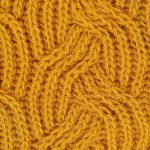When you create with fabric markers, ensuring your designs last is crucial. You'll want to start by letting your artwork dry completely and then use a heat setting technique that protects your work. It's not just about applying heat; it's about how you handle the entire process, from the type of fabric you choose to the way you care for your creations afterward. What you do next can make all the difference in preserving those vibrant colors and intricate details. So, how do you ensure your fabric markers stand the test of time?
Table of Contents
Key Takeaways
- Select high-quality, pigment-based fabric markers for better resistance to fading and washing.
- Pre-wash your fabric to remove any chemicals that may affect ink absorption.
- Apply heat setting by pressing with an iron on medium heat for 3-5 minutes, avoiding steam.
- Allow designs to dry for 24 hours before washing, and always wash inside out in cold water.
Choose the Right Fabric
When choosing fabric for your project, make sure it's suitable for the type of markers you plan to use. Different fabrics react differently with markers, so you'll want to select one that allows for optimal ink absorption and vibrant colors.
Cotton is a popular choice because it holds ink well and offers a smooth surface for drawing. If you're looking for something with a bit of stretch, consider using a cotton-blend fabric, which maintains good ink adherence while accommodating movement.
Avoid fabrics like polyester that can cause the ink to smudge or run. If you're working on a project that requires washing, opt for pre-washed fabrics to prevent shrinkage, which can distort your designs. Testing a small section of the fabric with your markers can help you gauge how well the ink will perform.
Additionally, think about the texture of the fabric. Heavily textured materials mightn't provide the clean lines you're aiming for, while a smoother fabric will allow for more precision.
Select Quality Fabric Markers
Choosing the right fabric is just the first step; selecting quality fabric markers is equally important to ensure your designs turn out vibrant and long-lasting. You'll want markers that not only deliver rich colors but also stand the test of time through washing and wear. Here are some tips to help you choose wisely:
- Look for Pigment-Based Inks: These inks are more resistant to fading and washing compared to dye-based options, making your artwork last longer.
- Check for Lightfastness: Choose markers that are rated for lightfastness, ensuring that your colors won't fade when exposed to sunlight.
- Consider the Tip Size: Depending on your design, you may need fine-tip markers for detailed work or broad-tip markers for larger areas. Having a mix can be beneficial.
Prepare the Fabric Surface
To get the best results with fabric markers, you need to start with the right fabric.
Make sure you pre-wash and dry it to remove any chemicals or finishes that could interfere with your designs.
This preparation sets the stage for vibrant, lasting artwork.
Choose Appropriate Fabric
Selecting the right fabric is crucial for ensuring that your designs with fabric markers turn out vibrant and long-lasting. Not all fabrics are created equal, and some will absorb ink better than others. To get the best results, consider these fabric types when planning your project:
- Cotton: This natural fiber absorbs ink well, allowing for bright colors and detailed designs.
- Canvas: A durable option that holds ink effectively, making it perfect for bags and home décor.
- Polyester blends: These fabrics can also work well, but look for those with a higher cotton content for better ink absorption.
Keep in mind that the smoother the fabric surface, the easier it will be for the markers to glide over.
Avoid fabrics with a lot of texture or those coated with finishes, as these can prevent ink from adhering properly.
Pre-Wash and Dry
Before you start designing with fabric markers, it's important to pre-wash and dry your fabric to remove any sizing or chemicals that might interfere with ink absorption. This step ensures that the markers adhere properly and the colors remain vibrant over time.
Here's a quick guide to help you through the pre-washing process:
| Step | Tips |
|---|---|
| Choose Detergent | Use a mild detergent to avoid harsh chemicals that can affect the fabric. |
| Wash Settings | Opt for a gentle cycle with cold or warm water to protect the fabric fibers. |
| Drying Method | Air drying is best; if using a dryer, choose a low heat setting to prevent shrinkage. |
Once your fabric is pre-washed and dried, it'll be ready for your artistic touch. Don't skip this crucial step; it lays the foundation for a long-lasting design. Prepping your fabric properly saves you time and frustration down the line, ensuring your creations look great and endure wash after wash. Now that you've prepared your canvas, you're ready to unleash your creativity!
Apply Heat Setting Techniques
Heat setting your fabric markers ensures that your designs remain vibrant and durable through washing and wear. This process locks in the colors, making them less likely to fade or smudge.
To effectively heat set your designs, follow these simple steps:
- Allow the design to dry: Give it at least 24 hours to dry completely before applying heat.
- Cover the design: Place a piece of parchment paper or a thin cloth over your artwork. This protects the design and prevents direct contact with the heat source.
- Use an iron: Set your iron to a medium heat without steam. Gently press it on the covered design for about 3-5 minutes. Move the iron constantly to avoid scorching.
- Let it cool: After heat setting, let the fabric cool completely before handling it.
Wash and Care Instructions
To keep your fabric marker designs looking their best, follow specific wash and care instructions.
First, always wait at least 24 hours after applying heat to your designs before washing. This allows the ink to set properly. When you're ready to wash, turn the fabric inside out to protect the artwork from friction and fading.
Use cold water and a gentle cycle to minimize wear. Avoid bleach and harsh detergents, as they can cause the colors to fade or run. If you can, hand wash your items to ensure they last longer.
When it comes to drying, skip the dryer; instead, air dry your fabric by laying it flat or hanging it up. Direct sunlight can fade the colors, so keep it in a shaded area.
If you need to iron your fabric, do so on the reverse side and use a low heat setting. This will help prevent damage to your designs.
Test for Longevity
When you choose fabric markers, the material you select plays a crucial role in how long your designs last.
You'll also want to master heat setting techniques to ensure your artwork withstands wear and washing.
Following proper wash care guidelines will keep your creations vibrant and intact for years to come.
Material Selection Importance
Choosing the right fabric for your project is crucial, as it directly impacts the longevity of your markers' designs. When you select the appropriate material, you ensure that your artwork remains vibrant and intact through washes and wear. Not all fabrics react the same way to fabric markers, so it's essential to consider a few key factors.
Here are some tips to help you choose the right fabric:
- Cotton: This natural fiber absorbs ink well, providing vivid colors and durability.
- Polyester: This synthetic fabric resists fading and is less prone to wear, making it an excellent option for long-lasting designs.
- Canvas: Thick and sturdy, canvas is perfect for heavy-duty projects where you want your designs to endure.
Heat Setting Techniques
Heat setting your fabric markers is essential for ensuring that your designs stay vibrant and withstand washing over time. To effectively heat set, you'll need an iron and a clean cloth.
First, let your artwork dry completely—this usually takes about 24 hours. Once dry, place the cloth over your design to protect it from direct heat.
Set your iron to the appropriate temperature for the fabric you're working with. For most fabrics, a medium heat setting works well, but always check the fabric care label. Avoid using steam, as it can disrupt the marker's ink.
Gently press the iron onto the cloth, holding it in place for about 30 seconds. Make sure to cover all areas of your design to ensure even heat distribution. Afterward, let the fabric cool completely before removing the cloth.
To test the longevity of your design, you can perform a simple scratch test once the fabric cools. If the ink doesn't smudge or lift, you've successfully heat set your markers.
This process not only enhances durability but also gives you peace of mind that your creations will last for years to come.
Wash Care Guidelines
To ensure your fabric markers last, always wash your creations gently and with care.
When you take the time to follow proper wash care guidelines, you can keep your designs vibrant and intact. Remember, harsh washing methods can fade your artwork and compromise the fabric's integrity.
Here are some essential tips for washing your fabric creations:
- Hand wash: Whenever possible, hand wash your fabric items in cold water using a mild detergent. This minimizes friction and helps maintain your designs.
- Avoid bleach: Stay away from bleach and harsh chemicals, as they can destroy your fabric markers and fade your artwork.
- Air dry: Skip the dryer! Lay your items flat or hang them to dry. Heat can cause colors to bleed or fade.
Store Fabric Creations Properly
When you store your fabric creations properly, you can preserve their vibrant colors and prevent any damage over time.
First, choose a cool, dry place away from direct sunlight. Sunlight can fade your colors, so use a closet or drawer instead. If you're storing multiple items, avoid folding them in a way that creates creases. Instead, roll them gently to maintain their shape and prevent unwanted wrinkles.
Next, consider using acid-free tissue paper or breathable storage bags. This helps to protect your fabrics from dust, moisture, and pests. If you're using plastic containers, make sure they're not airtight, as trapped moisture can lead to mildew.
Label your creations clearly to avoid confusion when accessing them later. This simple step saves you time and keeps your storage organized.
Frequently Asked Questions
Can I Use Fabric Markers on Synthetic Fabrics?
Yes, you can use fabric markers on synthetic fabrics, but results may vary. Some markers adhere better than others, so it's best to test a small area first to ensure you're satisfied with the outcome.
How Long Do Fabric Markers Last Before Fading?
Fabric markers can last several years before fading, depending on the quality and conditions. If you expose your designs to sunlight or frequent washing, you might notice them fading sooner than you'd like.
Are Fabric Markers Safe for Children's Clothing?
Yes, fabric markers are generally safe for children's clothing, especially non-toxic ones. Just make sure to check the labels. You'll want to wash and dry the items properly to ensure safety and durability.
Can I Mix Different Brands of Fabric Markers?
You can mix different brands of fabric markers, but results may vary. Test a small area first to see how they interact. Consistency in application and color may be affected, so proceed with caution.
What Should I Do if My Fabric Marker Dries Out?
If your fabric marker dries out, try shaking it well or gently pressing the tip to get the ink flowing again. If that doesn't work, consider soaking the tip in water or replacing the marker.
- Tetron Fabric for Curtains: Style and Maintenance Guide - June 18, 2025
- Tetron Fabric for Bedding: Comfort and Care Tips - June 18, 2025
- Tetron Fabric for Luggage: Durability and Design Tips - June 18, 2025





